Facts About Roads
The earliest roads were perhaps built in about 3500 BC in the Middle East.
Rome built roads to govern their vast empire. The phrase "all roads lead directly to Rome" was then coined. Some of the roads exist to this day, nearly about 2000 years after they were made.
Every country on earth is reconstructing old roads and building new ones in order to cope with the ever-incraesing volume of motor traffic.
In some continents, most of their roads are little more than flattened dirt tracks. After heavy storm, these roads will turn into mud and become dusty in the dry season.
There are more than four million miles of highways and roads in the U.S alone.
The Pan-American Highway is listed as the longest continuous road. At a wonderful 47958.451 km, it stretches from Argentina, through Canada to Alaska's Prudhoe Bay. 15 countries in South, Central and North America is impressively linked by the highway. Driving it will let us experience just about every climate this world has to offer and some of the world’s prettiest spots.
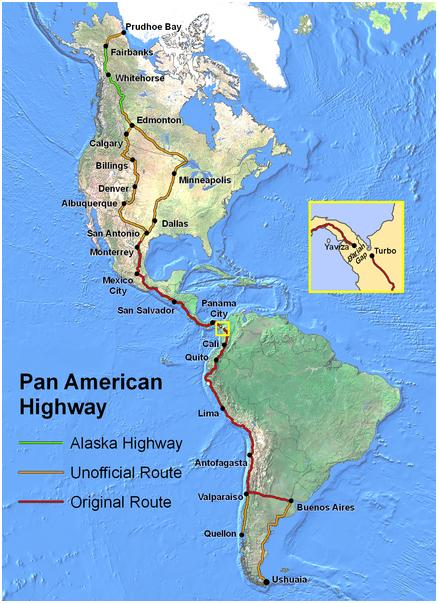
There is also the longest road tunnel in the world – Lærdal Tunnel. This 24.4km-long road tunnel is connecting Aurland and Lærdal in Sogn og Fjordane, Norway and located about 109 to 120 miles north-east of Bergen. It cost 1,082 million Norwegian krone and the tunnel was built so that problems with the heavy winter snowfalls that caused havoc with Norwegian commuters can be solved.
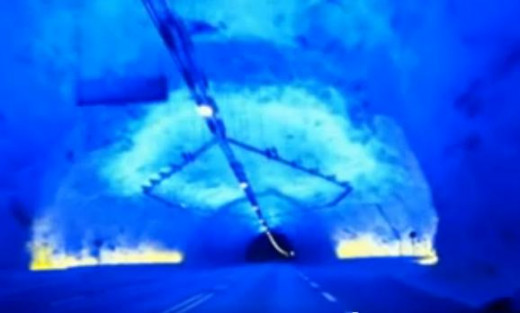
The 198.12 cm wide road to Giza is about 4,600 years old, giving this road the title of the planet's most ancient paved road. It covered a distance of about 12 km from the rock quarries southwest of Cairo to the quay on Lake Moeris, which then links up with the Nile River. This route was created so that the ancient Egyptians can transport massive blocks of basalt (used for building, especially for paving) to Giza.
Baldwin Street, in Dunedin, New Zealand (located in the residential suburb of North East Valley, 2.2 miles or 3.5 km northeast of Dunedin’s city center) is listed as the steepest residential street in the world. It rises about 70 meters over its short 350 meters distance. Other famous steep road would be the one located at Canton Avenue, in Pittsburgh, Pennsylvania, United States. Although the street is steeper than Baldwin Street, it is not recognised by the Guinnes Book of World Records perhaps because of its length.
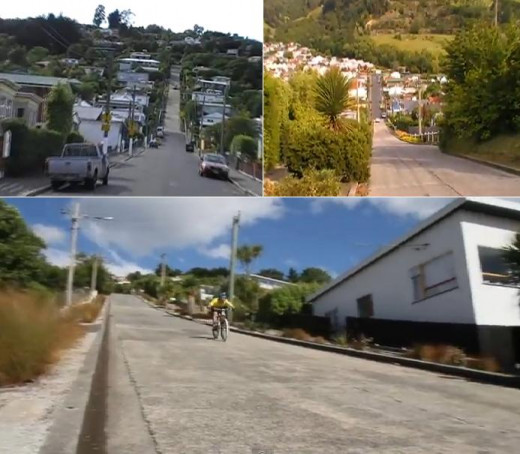
The North Yungas Road (or also known as Coroico Road, or Death Road) is christened as the world’s most dangerous road. This 43-miles-road (69 km) has caused the death of 200 – 300 travellers every year. This road leads from Bolivian capital La Paz through mountains to Coroico, and when you are driving on that road, you can see cross markings on many spots where vehicles have fallen. Most of the road is no wider than 10 feet (3.2 m) and there is few of guard rails which make it extremely dangerous. The visibility is also greatly reduced by the fog, rain and dust and in many places the surface fo the road is muddy and can loosen rocks from the road.
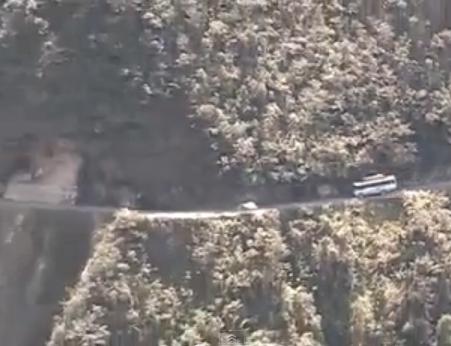
Semo La is a mountain pass situated in central Tibet. At an impressive elevation of about 5486 meters, this route contains the highest vehicle-accessible road on the planet. Labeled as the Northern Route, Semo La (La means “pass” in Tibetan) lets continuous bus service and cars sending supplies to the Chang Tang plateau. The road crossing the pass is actually an old unsurfaced track travelled only by a weekly trucks and bus heading west so that the boggy parts of the south of the country can be avoided.
The Millau Viaduct (a cable-stayed road-bridge) spans the river Tarn in France stands about 343 meters high – a bridge that is higher than the Eiffel Tower. It is regarded as the tallest bridge in the world. It is so high that they need special engineering in order to combat the 95 mph winds.
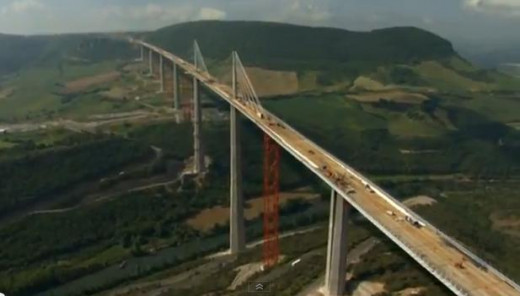
Route 90 is the longest Israeli road, and at the same time, the lowest road in the world. This road stretches from the nation’s northern border with Lebanon to its most south border with Egypt and the Red Sea. When it spans across Israel, the road passes down across the Jordan River Valley, and then running next to the west bank of the Dead sea – the lowest point of earth.
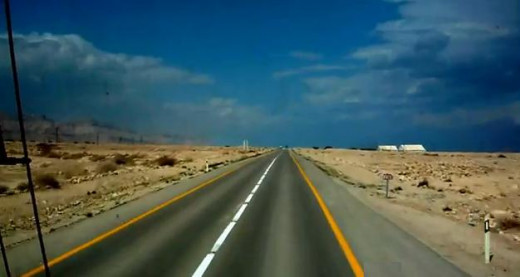
At its widest point the Ontario Highway 401 (or also known as the Macdonald-Cartier Freeway) has 18 lanes in the mainline and extra 4 lanes as connecting ramps. If all those lanes are taken into consideration, making it the total amounts of 22 lanes then it means that the Ontario Highway 401 in Canada has the widest road in the world.
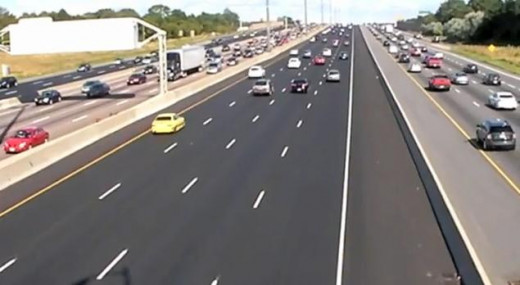
Monumental Axis is listed in the Guinness Book of Records for having the widest median of divided highway in the world.

With a total of 16 lanes, 9 de Julio Avenue, in the city of Buenos Aires, Argentina, is considered to be the world's widest street (but not the widest road).

The McMurdo South Pole Highway, or also called South Pole Traverse is considered as the iciest road on earth. It is a 1,601-km-long (995 miles) compacted snow road in Antarctica – flags mark its route. The United State’s McMurdo Station on the coast is linked by this unpaved road to the Amundsen-Scott South Pole Station. The road was actually constructed by leveling snow and filling in crevasses. This traverse is wanted by the National Science Foundation as an alternative way to deliver fuel and other bulky materials to the South Pole.
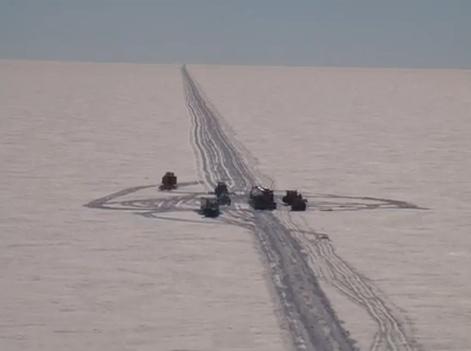
Related Topics
- How Roads are Made
Have you ever wondered what roads are made of? Not all roads are constructed from the same materials... - Facts about Asphalt
You walk on it, drive on it, bike and play on it. Even our planes land on it but very few people stop and think about what asphalt is, and how...







